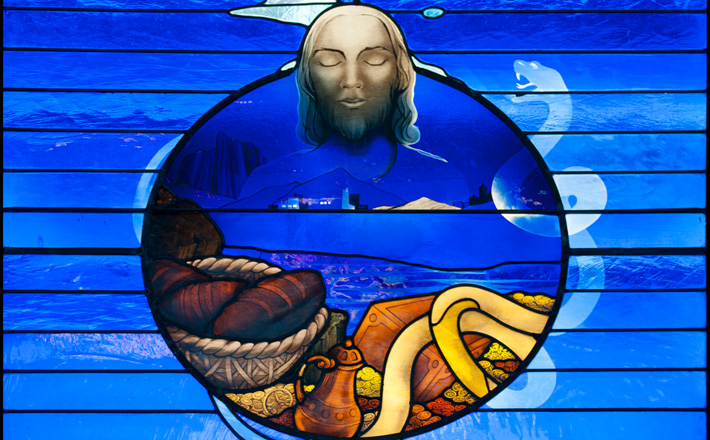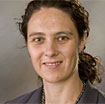Commentary on Genesis 2:15-17; 3:1-7
The lectionary reading for this first Sunday of Lent has often suffered from some serious misinterpretations:
First, consider the “woman is to blame” interpretation, according to which Eve is considered to be the weaker sex and thus susceptible to the snake’s theories, in addition to being a temptress herself, so leading her innocent husband astray has been greatly harmful to many women.
The nadir of such interpretations is to be found in the 15th century document Malleus Maleficarum that has been used to condemn women accused of witchcraft. This ill-fated document cites that “women were, from their creation, imperfect and lustful beings who posed grave dangers to men,” and consequently served as the source for witchcraft, thereby providing the basis for two centuries of persecution of thousands of presumed witches.
However, Phyllis Trible has shown in her book God and the Rhetoric of Sexuality that Genesis 2-3 depicts male and female as equals — connected to each other (cf the reference “bone from bone” and “flesh from flesh” in Genesis 2:23). They are also equal in responsibility and judgment, in shame and guilt, in redemption and grace. What the text says about the woman is also said about the man. Both hide from God, and both are punished.
A second misinterpretation regards viewing the serpent in this text as Satan or the devil. Such an interpretation is a serious anachronism, as the notion of the representation of evil in terms of the Satan or devil is a much later phenomenon that originated with the help of Persian influence. In the Ancient Near East, the snake often has been associated with wisdom and the human potential for discernment. It is telling, though, that in Gen 3:1, the serpent is not described as wise but as crafty. The cunning serpent brings alienation that affects the relationships between humans and between humans and their God.
A third misinterpretation regards the notion of original sin in the sense of “the flawed nature inherited from the first parents by all human beings” (Biddle, p 2) that often is associated with this week’s lectionary text. Mark Biddle, in his book on sin, Missing the Mark, shows how this later dogmatic concept cannot be derived from a text like Genesis 2-3 (pp 2-4).
Biddle rather proposes that Genesis 3 is the story of the human condition that is complex and paradoxical in nature. Moreover, instead of viewing this text in terms of a “‘fall’ from original essential humanity,” one would be better served to view this text in terms of the human’s “failure to develop into the fullness of being human” (p 7).
In this period of Lent, the following perspectives may be useful when considering this rich text: First, a key theme in this text is the notion of shame. Meda Stamper, in her reflection on preaching this particular cycle of lectionary texts for Lent (“Return to me: Preaching the Lenten Texts,” in Journal for Preachers 34/ 2 (2011), p 3-11), suggests that it perhaps is a good idea to include the verse before and after the lectionary text for today.
The man and woman who were in Genesis 2:25, oblivious of their nakedness, in Genesis 3:8 find themselves hiding from God because they are ashamed of their nakedness. The moment they ate from the fruit of the tree of knowledge of good and evil they realized something of their profound sense of vulnerability that is associated with the human condition. However, this shame also brings a sense of distrust between God and humans, as well as humans among one another. This sense of shame is related to the failure of these individuals to accept that they are made in the image and likeness of God.
Viewed in this way, sin may be understood as the fearful avoidance of human potential.
Second, in this text we see some ironic reflection on the disassociation between knowledge, wisdom, and life. After eating the fruit from the tree of knowledge of good and evil, the man and woman indeed gained knowledge when it says in Genesis 3:7 that their eyes were opened and they knew (yadar) that they were naked.
Moreover, they draw on the knowledge of sewing fig leaves in order to cover their nakedness. William Brown argues though that “the tree of the knowledge of good and evil, without the accompanying tree of life, offers only a partial, damning knowledge, an awareness of a further lack” (Ethos of Creation, p 157). So, when they eat of the forbidden fruit, their eyes are opened like the snake said it would, but rather than becoming like God, knowing good and evil, their partial knowledge is lacking in wisdom.
It is significant that in the later wisdom tradition, “the fruit of the righteous is considered to be ‘a tree of life’” (Proverbs 11:30. Cf. also Proverbs 13:12 and 15:4). And Woman Wisdom cries out in Proverbs 8:35, saying, “whoever finds me finds life.” It seems, in the ensuing appropriation of this text, sages held that wisdom constitutes “the inner unity of knowledge and life” (Brown, p155).
In a contemporary context, one sees how much misery is caused by this disassociation of knowledge and life. One may for instance have the knowledge to build an atom bomb, but what is the effect on life? One may have the knowledge to hack a computer, or to make a lot of money at the expense of others, but how is this conducive to life? True Wisdom is thus to hold on to knowledge that leads to life.
If we further read this story in Genesis 2-3, with its theme of human frailty that is so fitting in the time of Lent, we notice the compelling portrayal of God’s grace amidst the depravity. So we read in Genesis 3:21 how God sowed garments of skin for Adam and Eve — this act of clothing the fragile and flawed human beings serving as powerful symbol of God’s provision. Thus, in spite of the frailty, the shame and the precarious nature of the human condition outlined in this text, one sees a powerful witness of a God who continues to remain in relationship with God’s creatures.


March 9, 2014